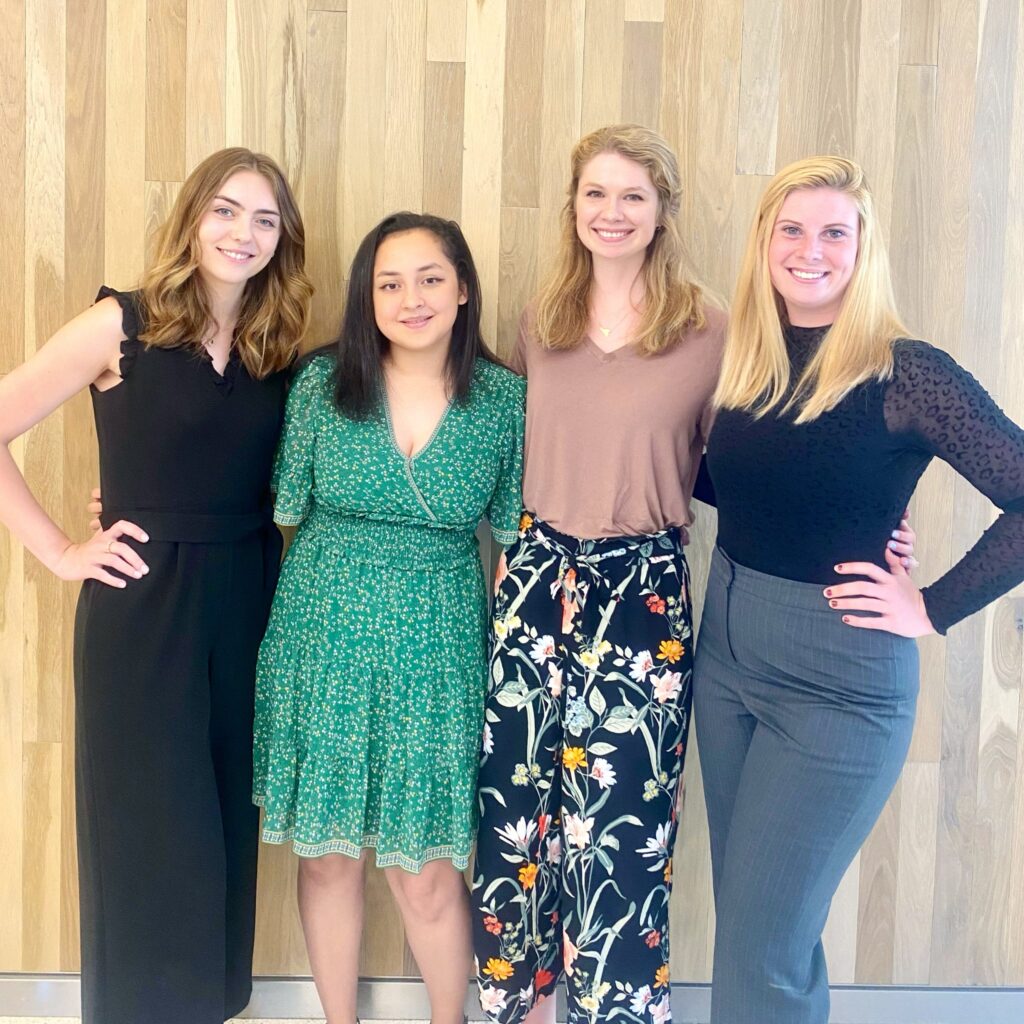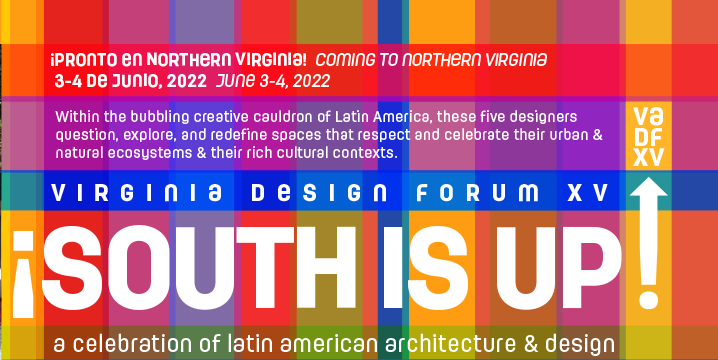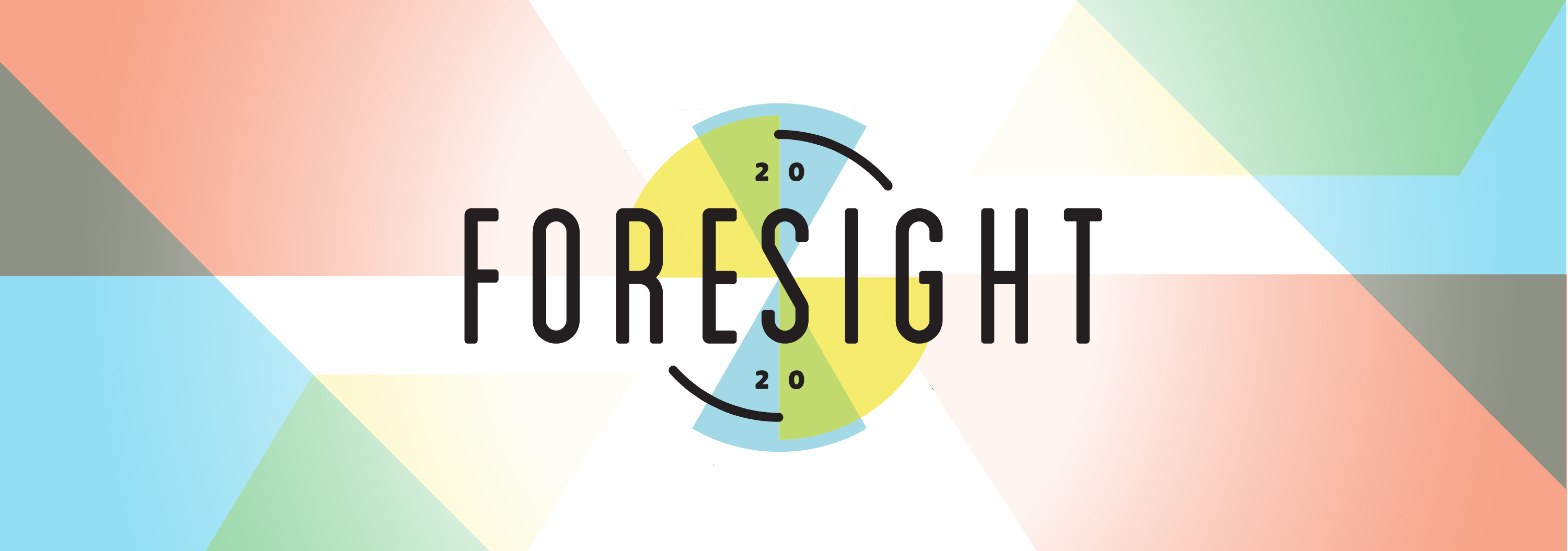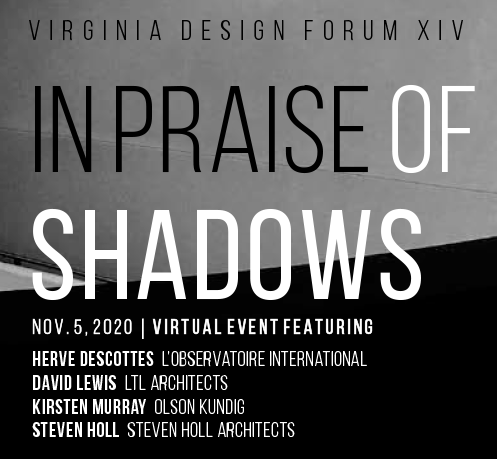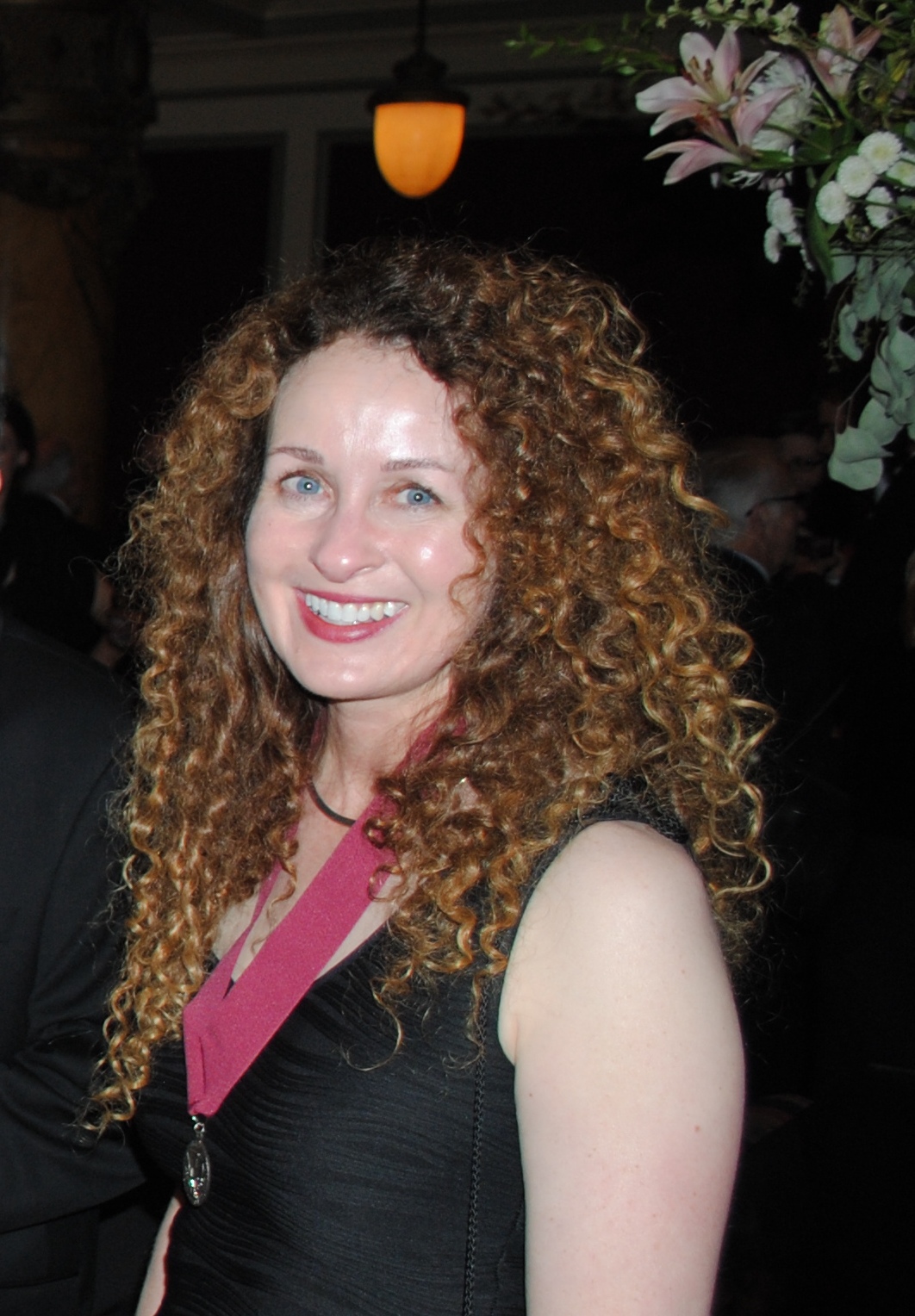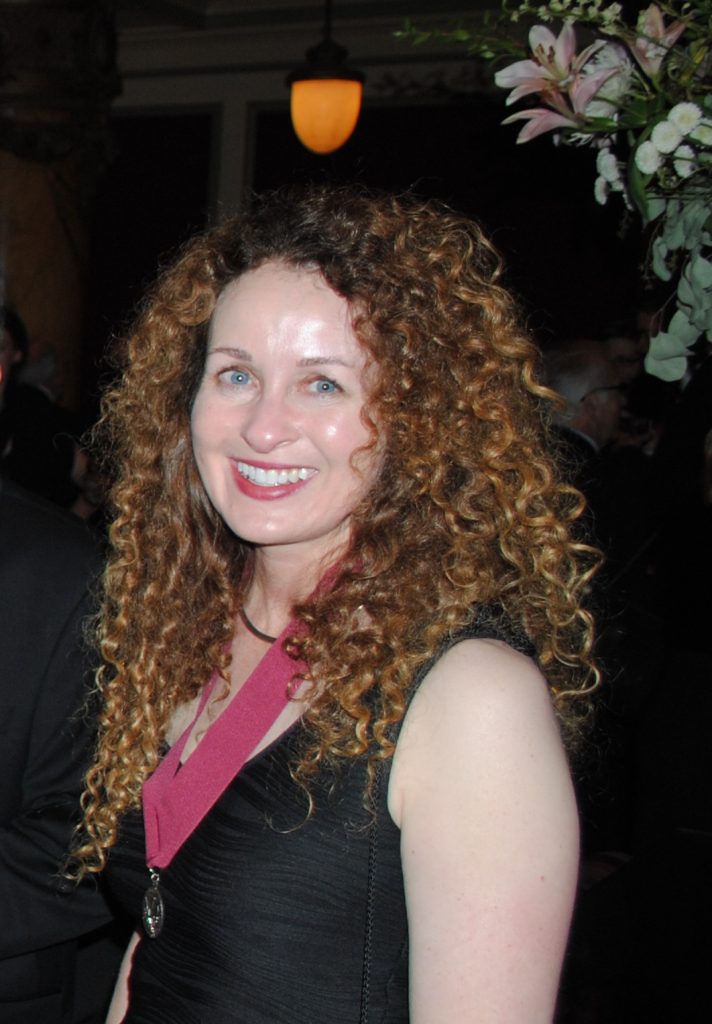Junichiro Tanizaki, in his book In Praise of Shadows writes, “In darkness, immutable tranquility holds sway.” Designers integrate this interplay of light, color, and shadow in the spaces they imagine — navigating the clarity that light brings alongside the ephemeral mystery of the shadows.
Inspired by this 73-page homage to “well-placed darkness,” the fourteenth biennial Virginia Design Forum: In Praise of Shadows embraces this theme through an exploration of craft and materiality.
The program takes place on Thursday, Nov. 5, 2020 and will be presented in collaboration with Architecture Exchange East as part of our FORESIGHT 2020 platform of programming.
Through a series of conversations, the Design Forum showcases the work of talented individuals whose shared craft extends beyond the calculated and strictly quantitative into more holistic practice — whose leading-edge preoccupation with light and shadow extends the diversity of approaches to how designers seek beauty through form, space, and materiality.
The work of the speakers embodies those essential
connections.
About the Speakers
These thought leaders come from diverse cultural and professional contexts, yet their work shares the power and nuance of how architects and allied professionals shape form through light. Through engaging the continuum of dim to bright, these designers shape our experience.
Steven Holl, FAIA (Steven Holl Architects | New York, NY)
Steven Holl is widely recognized for his ability to blend space and light with great contextual sensitivity and to utilize the unique qualities of each project to create a concept-driven design. He specializes in seamlessly integrating new projects into contexts with particular cultural and historic importance.
Kirsten Murray, FAIA (Olson Kundig | Seattle, WA)
Throughout her 30-year tenure at Olson Kundig, Kirsten Murray has created buildings and spaces that strengthen and enrich communities. Long inspired by Scandinavian modernist traditions, her architecture emphasizes warmth, natural materiality, tactility and refinement. By translating the innate conditions of a site—its nature, culture, topography and history—into built form, Murray’s designs create new interpretations of place that remain relevant over time.
Herve Descottes (L’Observitoire International, New York, NY)
In 1993, Hervé Descottes co-founded the lighting design firm L’Observatoire International in New York City after eight years of design practice in Paris, France. Descottes creates the lighting concepts for all projects designed by L’Observatoire, and oversees project development through project completion. He has been recognized numerous times by the lighting design and architectural community.
David J. Lewis, AIA (LTL Architects, New York, NY)
David Lewis is founding principal of LTL Architects, a design intensive architecture firm founded in 1997 with Paul Lewis and Marc Tsurumaki, located in New York City. LTL Architects develops solutions that work within project constraints to inform the design trajectory, exploring opportunistic overlaps between space, program, form, budget, and materials.
The Design Forum is generously sponsored by:
Platinum
Clark Nexsen
Gold
AIA Richmond
Nydree Flooring
School of Architecture + Design at Virginia Tech
UVA School of Architecture
William & Mary, Art & Art History
Sterling
American Hydrotech, Inc.
Moseley Architects
Quinn Evans
Silver
Ascent Engineering Group, Inc.
Glo Windows and Doors
Hanbury
Lighting Environments
Reader & Swartz Architects
Bronze
AIA Northern Virginia
Dunbar Milby Williams Pittman & Vaughan
Gulf Seaboard General Contractors, Inc.
Pella Windows of Virginia
Pyrok, Inc.
Sustainable Design Consulting, LLC
Registration
Tickets sales will reopen when registration for Architecture Exchange East launches in September.
Earn up to 7 AIA/CES learning units.
Interested in becoming a sponsor? Contact Judy Cheadle.

